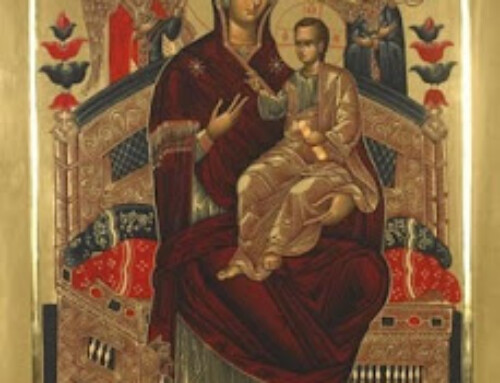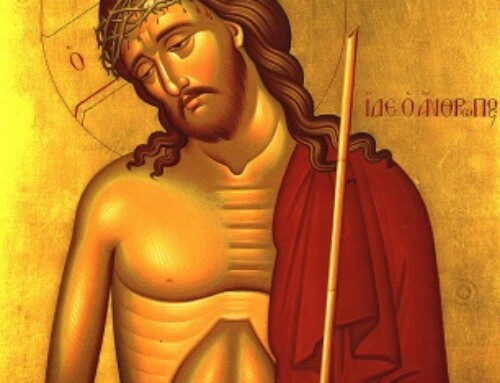Word Magazine February 1974 Page 11-12/24
WORSHIP: AN ELEMENTARY HANDBOOK OF THE ORTHODOX CHURCH
By Father Thomas Hopko
New York: Orthodox Church In America, 1972.
WORSHIP: an Elementary Handbook of the Orthodox Faith is the second volume in the series entitled “The Orthodox Faith” published by the Department of Religious Education of the Orthodox Church in America. The first in the series, Doctrine, also by Father Hopko, was reviewed in Concern (Volume VII, Spring, 1972). This second volume continues the fine, clear, thorough, and basically well-balanced approach which characterized Doctrine.
Happily, some of the drawbacks of the first volume have been corrected and Worship begins with an outline of the entire proposed five volume series. This introduction, as was not the case in the first volume, enables the reader to get a clear view of the purpose and goal of the entire series and the place of this particular volume in the overall development of the handbook. What this reviewer would have appreciated is an early introduction to worship itself as a human response to God’s love. This general apologia for worship, whose nature is poorly understood and in general has “poor press,” particularly among our Orthodox youth, should have been given consideration.
The series makes no pretense at being an exhaustive or detailed presentation of the Orthodox faith and any criticism must be tempered by this. It is intended as a readable source of basic information on the faith and life of the Orthodox Church. It does attempt to be comprehensive in the sense of covering, with a minimum of details and explanations, all major aspects of the structure of Orthodox worship and the yearly liturgical cycle. There is, however, one drawback to this approach, the same which was evident in the first volume of the series: the reader is often left looking for more information or a deeper explanation on a particular point or topic. Again, Father Hopko in many sections clearly did not write enough.
The book is divided into five main sections, each of which is further subdivided into appropriate subtopics and set off. The main chapters are 1) The Church Building, 2) The Sacraments,
3) The Daily Cycle, 4) The Church Year, and 5) The Divine Liturgy. The overall approach of each of these sections is phenomenological; that is, Father Hopko essentially describes what is seen or experienced in the various services or the progress of the various cycles of the Church’s calendar. In spite of what could be an oppressive approach to the subject, Father Hopko has avoided the traditional catechetical treatment which has characterized much of this sort of writing.
Explanations are held to a minimum; for instance, see the treatment of the “Sign of the Cross” (p.
9). However, at some points this descriptive approach becomes tiresome, as in his outline of Vespers, as one liturgical movement after another is described in a matter of fact presentation, reading something like a service book.
The book itself is tied together by general themes, and this is certainly one of its plusses. This is the case with Father Hopko’s Trinitarian emphasis, strong from the very beginning (p. 35). Throughout the book the author points to the Trinitarian activity of God in the Church. He emphasizes, for instance, that “Christ remains present and active in the Church through his Holy Spirit.” Again, he writes of the Divine Liturgy that its goal is the Kingdom of God (“Blessed is the Kingdom. . .”) and goes on to explain in Trinitarian terms that the Kingdom is “life in union with the Blessed Trinity; life lived towards the Father through the Son in the Holy Spirit.” (p. 162.)
With the exception of a few sections, which are presented only in outline, such as that on Vespers and several other services, Father Hopko presents what can only be called a refreshing and enlightening view of the worship of the Church, attempting to touch on every aspect. In spite of the fact that he is scrupulously traditional in presenting the liturgical and sacramental life of the Church, he admits that the services by their very nature, expressing the inner life of a living community, are evolving. In the discussion of vestments he writes that,
As the various details of clerical vestments evolved through history, they became very complex and even somewhat exaggerated. The general trend in the Church today is toward simplification. We can almost certainly look forward to a continual evolution in Church vestments which will lead the Church to practices more in line with the original Christian Biblical and sacramental inspiration. (p. 20.)
There is an openness in the presentation and as in the first volume, Doctrine, no mere pious affirmations of tradition or traditional practices for their own sake. This reviewer, however, would have appreciated a discussion of the reason for use of vestments and church decoration in general.
Father Hopko’s treatment of the Liturgy will be literally a revelation to most Orthodox. As he points out (p. 157, 158) his treatment is a departure from the traditional approach “which treats the services as if they were a drama enacted by the clergy and ‘attended’ by the people in which each part stands for some aspect of Christ’s life and work.” Although he admits that this popular symbolic interpretation is helpful to many people, it is nevertheless “completely alien to the genuine meaning and Purpose of the Divine Liturgy in the Orthodox Church.” (v 58.)
Certainly, the most valuable section is the last chapter on Divine Liturgy. The approach is essentially descriptive and offers a realistic historical explanation for the structure of the Liturgy, having its roots in our Old Testament heritage and the historical situation in which it developed.
The Divine Liturgy, Father Hopko explains, is primarily the common action of the entire People of God. It is not a show which the priest performs. It is this common action, leitourgia of the Orthodox faithful which constitutes the Church as the Body of Christ. This communal character of the Liturgy excludes the celebration for private “intentions” or private gatherings; it is always offered “on behalf of all and for all.” In this context Father Hopko makes the distinction between private prayers and liturgical worship. Private prayer is a personal activity, “a walking in the presence of God.” (p. 62). This clear distinction between private and corporate prayer puts the Liturgy in a unique realm which cannot be equated with staying at home and praying instead of attending Liturgy on Sunday morning — a point all too often missed by Orthodox in America.
Although the author’s approach is almost exclusively descriptive, it is nonetheless an extremely valuable step by step outline of what actually happens, accompanied by very practical explanations. This reviewer would have appreciated a more substantial treatment of certain sections of the Liturgy such as the Great Litany. It could have been exploited more fully to demonstrate, for instance, the Church’s intimate concern for the practical needs of the world, for the well-being of the people, for responsible civil government. The Litany is in fact a summary of God’s concern for the life of the world which is fulfilled most perfectly in the Eucharistic offering.
In spite of the danger inherent in a treatment of this subject, Worship avoids presenting only one, national tradition and manages a synthetic treatment. This seems to be true except in his discussion of the Antiphons, where he presents the Slavic practice of singing parts of Psalms 103 and 146; while strictly speaking this is the proper form, alternatives are allowed and used in the Syrian and Greek traditions where the hymns “Save us, O Son of God” and “Through the Intercessions of the Theotokos” are sung as Antophons in place of the two Psalms and the Beatitudes, which are omitted. This is, however, the only place where the author fails to note the differences among the various Orthodox traditions.
Perhaps one of the author’s most interesting sections is that on the sacrament of marriage. “Jesus taught the uniqueness of human marriage as the most perfect natural expression of God’s love for men, of his own love for the Church.” (p. 42.) Marriage is out of the realm of legitimization of sex and the male-female relationship or the procreation of children. He places marriage firmly in the Orthodox perspective of mutuality and love. The first goal of marriage is love which is a reflection of the love of the Holy Trinity; it is from the depth of this love that children and family life flow naturally. Since this love in itself is valuable, it is not put to death by death; the idea that the marital bond is destroyed at death is a distortion. “In Christian marriage the holy Spirit is given so that what is begun on earth does not ‘part in death’ but is fulfilled and continues most perfectly in the Kingdom of God.” (p. 42.) These several notions constitute the fundamentals of the orthodox doctrine of marriage, which is the sacrament of love and family life.
Father Hopko also discusses monasticism as a way of Christian life; he points out that it is a life dedicated “solely to God.” We can only hope that the same affirmation can be made of those of us who see our Christian vocation in the married state where surely our service to God must be no less dedicated, albeit through our children and husbands or wives. Monasticism, on the other hand, in Orthodox tradition was totally isolated and had its element of service and hospitality both implicitly and explicitly affirmed. The treatment of monasticism, unhappily much mis-
understood as a Christian vocation today, could have used more of an apologia; this reviewer would have appreciated an affirmation that monasticism is not a rejection of the goodness of marriage, not necessarily an “escape” from the world, not a denial of sexuality. There is too
much uninformed criticism of the monastic life, even among contemporary Orthodox, not to have dealt with popular misunderstanding and misinformation. Again, the only criticism is that Father Hopko did not write enough.
The author points out, more or less directly, the social dimension of the worship, the relationship between worship and everyday life. The book provides many appropriate opportunities for such a discussion of social involvement as a reflection of our worship life. Father Hopko, for instance, writes of the “real life” which is given to us in the Church and in Her sacraments; presumably this authentic life must be reflected in the manner in which we live, in our dealings with our neighbors, friends, family, and the general society. The life abundantly given to us in the worship and liturgical reality which is the concern of this book means something to the average Orthodox believer who must struggle with the moral and spiritual problems of daily existence. Father Hopko’s clearest emphasis of this point is found, where it cannot be avoided, in the discussion of the pre-lenten cycle and the Gospel reading of St. Matthew 25 (“For I was hungry,” etc.). He writes in clear concord with the Gospel text and the moral and spiritual tradition of the Church that:
Our salvation and final judgment will depend upon our deeds, not merely on our intentions or even on the mercies of God devoid of our own personal cooperation and obedience. (p. 74.)
A chapter on “Life and Worship” would have been a valuable conclusion to the work, appropriately placed after the discussion of the Divine Liturgy.
Worship is well written and presents a popular treatment of Orthodox liturgical life. In spite of the minor criticisms, inherent in the limited nature of the series, the book is valuable not only for what it says, but for the manner in which the author presents it. The book is intended for a general audience and can well be appreciated by the average reader. Father Hopko knows his subject and knows how to present it.
The art work and illustrations, as was the case in the first volume, Doctrine, is excellent and well suited to various topics being discussed. This reviewer recommends this book highly, along with Doctrine, as an invaluable addition to the church school library and the library of the church school teacher who wants to know about the faith he or she is trying to communicate and have the information readily at hand. Selected Sections of both Doctrine and Worship would provide valuable study material for an adult discussion group. The publishers might consider the eventual publication of a study guide to the entire series. In the meantime give the first two volumes a try in your parish.
JOHN L. BOOJAMRA
Sinning With Our Lips
We sin with our lips in two ways:
either when we say unjust things, or omit to say just things.
— St. Gregory time Great
The Word




